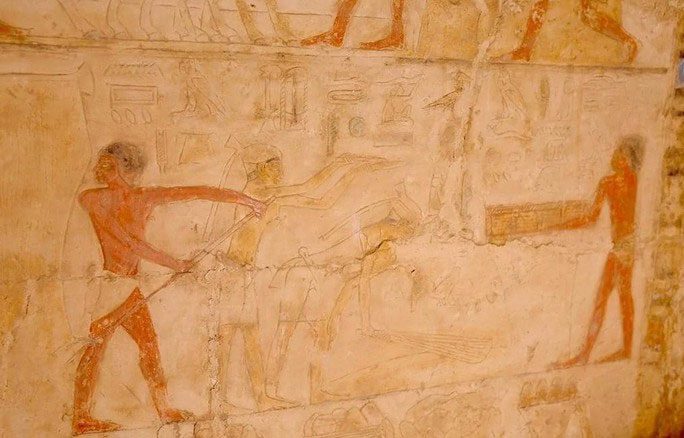Two embalming workshops dating back over 2,300 years reveal fascinating details about the technology used to make humans and animals “immortal” according to ancient beliefs, including “optional services” at varying price levels.
According to the Egyptian Ministry of Tourism and Antiquities, these are the largest and most complete embalming workshops ever excavated, one for embalming humans and the other dedicated to embalming animals.
Both were built around the end of the XXX Dynasty (from 380 BC to 343 BC) and the beginning of the Ptolemaic Kingdom ruled by Alexandros III of Macedonia (Alexander the Great), which began in 332 BC.
They are located in the ancient cemetery of Saqqara in Giza Province, Egypt.

A relief depicting a step in the embalming process – (Photo: EGYPTIAN MINISTRY OF TOURISM AND ANTIQUITIES).
According to Heritage Daily, the ancient Egyptians believed that embalming was meant for the “ka”—a term akin to what we now consider the soul—to return to the body after death for a period, thus beginning the process of rebirth.
Items excavated from human embalming show that achieving “eternal life” came at different costs, meaning the price varied for each type of embalming and people could choose the technology based on their budget, rather than everyone being embalmed in the same way!
This workshop is a rectangular building made of mud bricks, containing several chambers separated from one another, with each chamber having a 2-meter-long and 1-meter-wide bed. The workshop still holds some pottery, tools, ritual vessels, linen, and black resin used in the embalming process.
The animal embalming workshop has a similar layout, with a central hall and entrance lined with limestone, and still contains many ceramic jars, animal remains, and other specialized structures.
This excavation also revealed two intricately decorated tombs, one belonging to a person from the Eighteenth Dynasty (around 1400 BC) named Menjebu, noted to be a priest of the goddess Qadesh.
The other tomb, even older, belonged to someone named “Ni-Hesbast-Pa” from the Fifth Dynasty (around 2400 BC), who held significant administrative and religious titles, praised as “a priest of the gods.”
Additionally, a group of statues depicting a couple was found, along with wooden and stone statues representing other individuals, a statue of the god Osiris, fragments of clay seals, and a colorful wooden coffin from the New Kingdom (from the Eighteenth Dynasty onward).


















































